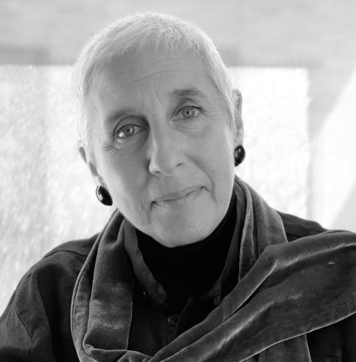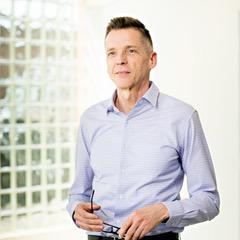The school reform community has lost one of its brightest lights. Linda Brown is dead at 81.
I met Linda in 1993 at the dawn of the public charter school movement. Her unrelenting commitment to excellence in urban schools inspired my work through the decades, and I was fortunate to serve for years as board chair of the organization she founded, Building Excellent Schools (BES).
In her 20 years leading BES, Linda identified and trained hundreds of aspiring school leaders in a rigorous, year-long fellowship. Many of the charter schools they founded are today among the highest performing in the country, beacons of what public education can be and must become.
From coast to coast, they offer children in marginalized communities a reliable path to college and in turn, professional opportunity and civic influence. They are engines of diversity, equity, and inclusion.
In New York City, fellow Lester Long founded South Bronx Classical, now one of four schools in the Classical Charter Schools network. Classical, 89 percent of whose students live below the poverty line and 98 percent of whom are African American or Hispanic, posts the strongest results of any network in the city. In 2023, 98 percent of Classical’s students were proficient on state tests in math and 90 percent in English Language Arts, of which nearly half performed at the state’s highest level—a jaw-dropping result. In the Pico-Union district of Los Angeles, fellow Malka Borrego founded Equitas Academy, which today boasts six schools. Ninety-five percent of the network’s students are Latino, and 92 percent are from low-income families. The schools have repeatedly been named among the top in Los Angeles County.
How did Linda do it? For one, she had an uncanny ability to identify leaders—smart, ambitious, driven, inexhaustible leaders who would persist through any obstacle to create excellent schools. “She asked the toughest questions, and she could spot a fake leader from a mile away,” remembered fellow Graham Browne, founder of Forte Prep in Queens. Just two in 100 BES applicants made the cut.
But the program’s secret sauce was the fellows’ visits to dozens of high-achieving “No Excuses” schools in cities across America.
Each morning, the bus set out from their hotel at six o’clock sharp, so that the fellows could witness students arriving at the day’s school. How did the school’s leaders greet students? Was the arrival procedure engineered to get students quickly to their seats, engaged, and ready to learn? Were lessons launched briskly or delayed by ponderous “hooks”? Standing in the aisle on the return trip, her formidable colleague of 20 years, chief academic officer Sue Walsh, “thin-sliced” what they had just seen. In the third class, she asked the fellows, how many students did you count up as engaged in the learning activity? When you analyzed students’ independent work from the fourth class, what did you identify as the cause of the lesson’s failure to meet the learning goal? Watching excellence in action, the fellows culled from each school the proven practices that would inform their own school’s designs.
It was an alchemy of audacity and humility: the audacity to announce a school that would trounce all those around it; the humility to exhaustively study the proven practices of those who came before them. John King. Brett Peiser. Dacia Toll. Doug Lemov. Hall of famers, all.
Linda knew that the first step in building great schools was to stop making excuses. No longer would educators shift the blame for their failure to educate by invoking poverty, racism, or resources. These injustices demanded action. But to invoke this litany in defense of low achievement was self-abasing: Within these four walls of the school, they said, we have the tools to prevail. “No excuses” was a radical and ennobling pledge to do whatever it takes to ensure every child succeeds. Not in some distant future. Now.
“There’s no excuse to not be prepared to lead your lesson,” Sue once said. “There’s no excuse to not have planned. There’s no excuse that you haven’t talked to families about how their child is doing. There’s no excuse for you to not review student work quickly and get it back to students. There’s no excuse for you to not have set up tutoring hours because your children need tutoring.”
The results were arresting. Studying Boston’s charter sector—where John King, Doug Lemov, and Brett Peiser all made their start—researchers from MIT and Harvard found not only dramatic effects on state tests, but also on numerous other critical outcomes, including high school graduation exam passing rates, Advanced Placement test scores, SAT scores, rates of attendance at four-year colleges, and qualification for state scholarships. Mathematica reported that Black students who attended both a KIPP middle and high school were as likely as their white peers to graduate from a four-year college.
Stanford’s Center for Research on Education Outcomes (CREDO), studying the academic progress of 1.8 million charter students, found in 2023 some 1,000 “gap-busting” charter schools that were closing—and in some cases reversing—long-standing achievement gaps. Linda’s schools were well-represented. “There is strong evidence,” CREDO reported, “that these gap-busting schools can be scaled.” Indeed, the number of seats in high-performing networks backed by the Charter School Growth Fund is projected to grow by 53,000 annually, equivalent to opening a district the size of Boston’s every year.
No Excuses schools were far from perfect. The job demands were difficult to sustain and the balance of warmth and strictness expected of teachers elusive. Too much attention was given to short-term gains in ELA and math. Arts and enrichment offerings were far too limited. Special education received too little attention. Suspension rates were high. Leaders of color were more often appointed deans of students, responsible for culture and discipline, than deans of instruction. But on all these fronts, an increasing number of schools and networks have acknowledged their mistakes and are evolving their practices.
Yet in recent accounts of Linda’s work, the elephant in the room goes unmentioned: the charter sector’s turning away from much of what she believed.
Following the murder of George Floyd, the racial reckoning of 2020 could have expunged curricula of racial and ethnic stereotypes and elevated students’s voices and ideas. Most importantly, it could have taken aim at the persistently low expectations of the American classroom and insisted that only tasks and activities worthy of students—elevated, rigorous, and engaging—be placed before them. It could have insisted that children be educated.
But that is not what happened. In the name of dismantling systems of oppression, many schools eliminated clear and consistent consequences for minor infractions. And with test scores, achievement, and merit all newly problematic, the focus on instruction and academic excellence was lost.
Exacerbated by the social and emotional tolls of the pandemic, discipline deteriorated in many schools. Results sagged. By 2022, some No Excuses schools that had routinely performed well above the state average now sank to below that of their low-performing urban districts.
Linda retired in 2018. New cohorts of fellows, like professionals everywhere, had different expectations of the workplace. Responding to the changed climate, BES’s new leaders portrayed BES’s boot camp demands not as a bracing opportunity, but as exploitation. Linda’s and Sue’s unvarnished feedback was not a gift, a shortcut to success; it was a microaggression.
For eight years before launching BES, Linda had run the Massachusetts Charter School Resource Center. She’d seen dozens of early charter schools that invoked progressive education shibboleths—including the “critical pedagogy” of Paulo Friere—end in abject failure. But BES’s new leaders had not.
Reviewing a school visit schedule for fellows in 2019, Sue caught that an advisory firm to BES had replaced a high-performing school on the schedule with another California charter. Inspired by Friere’s call for social justice, the substituting school proposed to build “warrior scholars,” students “who understand their individual and collective responsibility to be warriors for the cause of equity and justice in our community and the broader global society.” That year, the state found only six percent of the school’s students proficient in math and 17 percent in English Language Arts. It was one of the worst schools in the state. In refusing to renew the school’s charter, its authorizer noted tartly, “restorative work should also include these kids being able to master reading and writing and computing.” Sue thwarted the substitution and the academically failed school was not upheld as an exemplar. But now she was an outcast at BES, excluded from meetings, her reports supervised by others. She left in 2020.
A year ago, I met Linda and Sue for lunch at a restaurant in Boston. Linda was still sharp, but her body was failing. As waves of pain passed through her, she flinched and fell silent. I decided to ask her gingerly about BES’s turning away from what she had built. She said nothing. I asked her about the future of the education reform sector. She turned slowly toward me, her piercing gaze undimmed. “This will pass,” she said.
I didn’t believe her, but said nothing. But now I think she was right, as always. There is no equity without excellence. We can and must return to building excellent schools.




